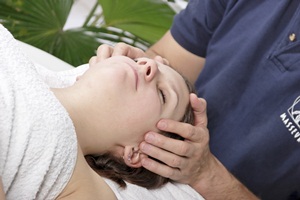Knee pain is one of the
most common orthopedic ailments treated by chiropractors. The knee takes a huge
amount of stress, as it is built only to bend in one direction; however, many
movements we make force the knee to bend slightly in other directions, along
with having to support the weight of the body, which can lead to knee pain and
injury. It is quite easy to damage the tendons, ligaments, meniscus (knee
cartilage) and bones that comprise the knee, and this damage can take months to
recover from.
Having chronic knee pain can seriously interfere with your
life, making it difficult to do the simplest everyday things such as walking up
and down stairs, grocery shopping or even just walking across the room. Knee
pain can be chronic (i.e. stemming from osteoarthritis, degenerative joint
disease, etc.) or acute (i.e. stemming from an accident, sports injury, etc.)
Whether due to previous injury, increased body weight or just living longer,
degenerative knee pain and is a condition that is becoming much more common in
people over age 50, and the chronic pain, swelling and inflammation can put you
at higher risk of arthritis.
Hyperpronation (putting most of your weight on the outsides
of your feet as you walk) can be a cause of knee pain. You may be able to
determine if you are hyperpronating by examining the heels of your shoes. If
they are excessively worn on the outsides, this is likely due to
hyperpronation, and you may want to look into getting special foot supports to
correct this problem.
While injury to the knee itself is quite common, some people
are not aware of the fact that sometimes the pain in their knee may not be due
to a knee injury, but is actually referred pain from an irritated nerve in the
lower back area of the spinal column. Many with pain in their knees report also
having pain in their lower back and pelvis, which may be due to inflammation
around the nerves connecting the knee to the spinal cord.
While pain medication or cortisone shots may provide
temporary pain relief, they do not address the root cause of the problem, and
long-term use of either of these medications is not recommended. However, a
qualified chiropractor can evaluate your condition and provide safe, holistic
treatment that doesn’t involve the use of drugs or surgery.
Chiropractic treatment may involve spinal adjustments, joint
manipulation, stretches, exercises and advice on footwear or orthotics that
will address the cause of your knee pain and start you on the road to healing.
















